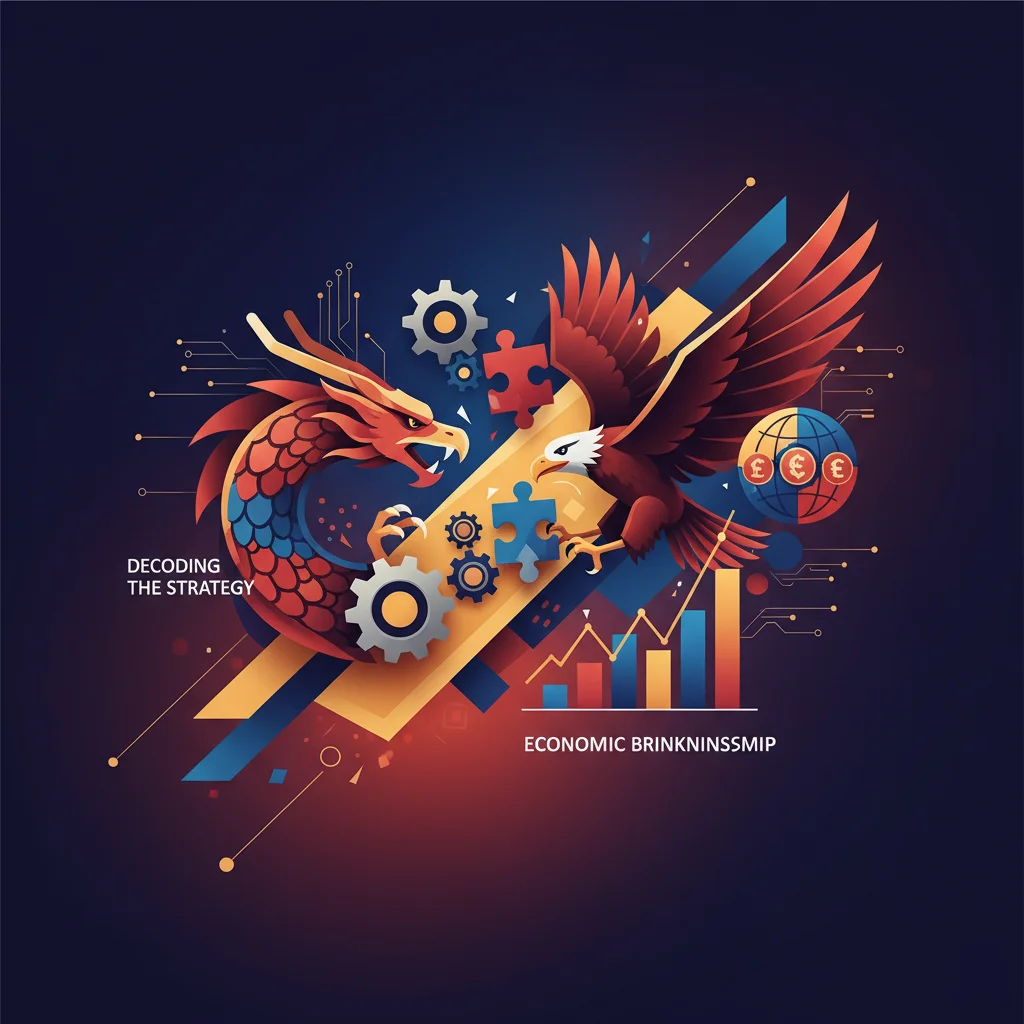
The Trump-China Trade War: Decoding the Strategy Behind the Spectacle
The High-Stakes Game of Economic Brinkmanship
In the world of global finance and geopolitics, few relationships are as scrutinized, volatile, and impactful as the one between the United States and China. For investors, business leaders, and finance professionals, navigating this dynamic is paramount. The rhetoric, often broadcasted in 280 characters or less, can send shockwaves through the stock market, while the subtle policy shifts behind the scenes dictate the long-term trajectory of the global economy. A recent analysis from the Financial Times highlights a crucial duality in former President Trump’s approach: a public-facing persona of uncompromising toughness, juxtaposed with a private willingness to seek a truce.
This “nuanced approach” is more than just political posturing; it’s a complex strategy that creates both significant risk and potential opportunity. Understanding the gap between the talk and the potential for a truce is essential for anyone involved in international trading, investing, or corporate strategy. This post will delve into the layers of this high-stakes economic game, exploring the motivations, the market implications, and what it all means for the future of global economics and financial technology.
The “Tough Talk”: A Strategy of Calculated Disruption
The cornerstone of Trump’s China policy has been a consistently aggressive public stance. This approach is fueled by a desire to appeal to a domestic base concerned about job losses and to satisfy Washington hardliners who advocate for a fundamental decoupling of the two economies. The primary weapon in this arsenal has been tariffs—taxes on imported goods designed to make Chinese products more expensive and encourage domestic production.
The impact of this rhetoric on financial markets is immediate and often dramatic. A single tweet threatening new tariffs can trigger a sell-off, wiping billions from global equity values in minutes. This volatility poses a significant challenge for traders and long-term investors alike. The uncertainty makes it difficult to price assets accurately, as geopolitical risk becomes a dominant factor in valuation models, often overshadowing traditional fundamentals like earnings and economic growth. According to the FT’s reporting, this tough stance is a deliberate play to gain leverage in negotiations, a high-risk, high-reward strategy that keeps markets on edge (source).
This constant state of flux has forced businesses to re-evaluate decades of supply chain strategy. The era of optimizing solely for cost is being replaced by a new paradigm that prioritizes resilience and geopolitical stability. For many, this means diversifying away from China, a costly and complex undertaking known as “de-risking.”
Beyond the Rhetoric: The Pragmatic Push for a Truce
While the hardline approach dominates headlines, the underlying reality is more complex. The same Financial Times report underscores that Trump, at his core a dealmaker, “holds out hope of truce in [the] trade war” (source). This pragmatism stems from a clear understanding of the economic consequences of a full-blown, unending trade war. Tariffs are a double-edged sword; while they penalize Chinese exporters, they also raise costs for American consumers and businesses, potentially stoking inflation and dampening economic growth.
Sectors like agriculture, technology, and retail are particularly vulnerable. Farmers lose a critical export market, tech companies face disruptions to their intricate global supply chains, and retailers must either absorb higher costs or pass them on to consumers. These negative impacts create powerful domestic political pressure to find a resolution. Therefore, the “nu


